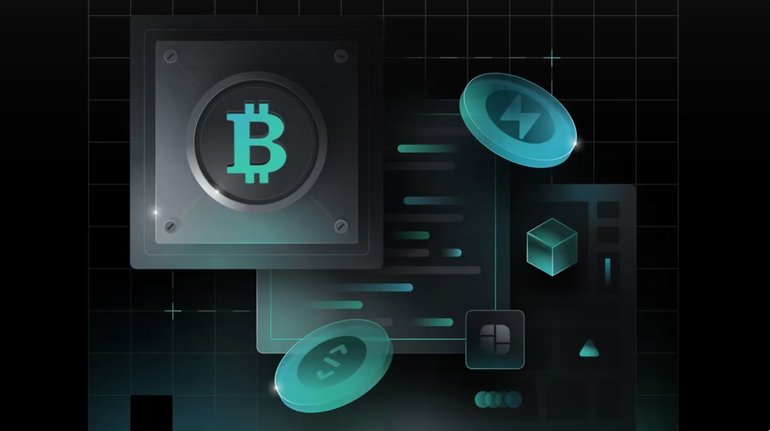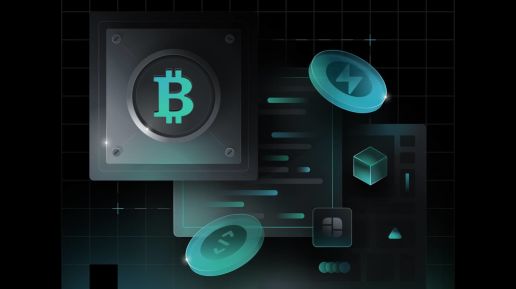An Introduction to Bitcoin Ordinals

One Bitcoin-based development in 2023 has set the crypto space ablaze: Ordinals.
Ordinals reignited discussions about non-fungible tokens (NFTs) on Bitcoin, and has turned heads with the possibilities that Ordinals on Bitcoin could bring to the blockchain.
But before we break down what has the crypto community so excited – and skeptical – about Ordinals, let’s dive into the protocol, its components, and what it has achieved thus far since its mainnet launch.
What Are Ordinals?
“Ordinals” was used by software engineer Casey Rodarmor, the creator of the protocol, to specifically refer to a numbering scheme that ascribes a number to each satoshi on the Bitcoin network. A satoshi – sat, for short – is the smallest unit of bitcoin, representing one-hundred-millionths of the cryptocurrency.
The process of assigning these numbers to sats is known as ordinal theory.
These satoshis are numbered in the order that they’re mined. This means that even if a sat ends up moving to a different wallet, the ordinal number ascribed to it stays the same.
That effectively allows for the exact tracking of each sat and for its individual verification.
However, the key that allowed Ordinals to dominate conversation? Bitcoin Inscriptions.
What Are Bitcoin Inscriptions?
“Inscriptions” refers to the creation of bitcoin-native digital artifacts by inscribing sats with content. The Ordinals protocol actually incorporates two of Bitcoin soft fork upgrades from recent years to enable Bitcoin inscriptions: SegWit and Taproot.
An important component of the Segregated Witness (SegWit) update was the ability to store more transactions in a Bitcoin block. More specifically, it increased the Bitcoin block’s capacity to 4 MB from 1 MB, meaning that each Bitcoin block could hold up to 4 MB of transactions as a result.
The Taproot upgrade, which went live in November 2021, made bitcoin transactions faster and more efficient, namely by combining multiple transactions together to take up less space on the block.
It was discovered that by using a design quirk of Taproot, you can actually inscribe a file that is below the 4MB limit on a Bitcoin block to an individual sat through something called witness data. This file can be anything: images, videos, you name it, and it ends up having its own unique identifier that allows it to be tracked.
Sounds like an NFT, doesn’t it? But here, Rodarmor points out that each inscription is actually considered a digital artifact and that while digital artifacts are NFTs, not all NFTs are digital artifacts.
Why is that the case? Let’s break down the differences between each.
Digital Artifacts vs. NFTs: What’s the Difference?
Digital artifacts are, essentially, the ideals of NFTs embodied.
Because each inscription is actually processed as a bitcoin transaction, the file is stored directly on the Bitcoin base layer itself. There is no use of a side chain or another token, and they do not link to a network like IPFS.
By contrast, NFTs are based on smart contracts and are supported by centralized blockchains. Their content is stored off-chain, and the fact that they’re supported by centralized blockchains means that they do have back-door admin keys.
This means that digital artifacts are on-chain, decentralized, immutable and secure – just like the very blockchain on which they are created and live.
The Bitcoin Ordinals Debate
As of this article’s writing, over 100,000 Ordinals have been minted on Bitcoin.
The fact that Ordinals has hit this milestone less than a month since mainnet launch speaks to its popularity and, by extension, the value many believe the protocol can add to the Bitcoin blockchain and its wider infrastructure.
But there are also warnings about the possible negative impacts that Ordinals could have on Bitcoin.
Here are some of the biggest points of contention that have arisen surrounding Ordinals on Bitcoin:
Block Space and Network Consumption
Because inscriptions happen directly on Bitcoin, this means that they also use up block space. And, given the nature of data being inscribed on the blockchain via Ordinals, the amount of block space needed and used can be substantial.
That fact has been at the heart of many heated discussions about Ordinals. The protocol’s critics have expressed concern over the amount of block space being used to inscribe Ordinals, specifically the use of block space for non-financial data.
By extension, they have also argued that the network congestion that has come with the popularity of Ordinals may result in longer on-chain confirmation times for transactions.
In the weeks following Ordinals’ launch, the upper range of average block sizes on Bitcoin rose to 3.0-3.5 MB from 1.5-2.0 MB, according to blockchain data company Glassnode. The largest block and transaction in Bitcoin history was also made on February 1, when the first inscription in what is known as the Taproot Wizards collection used up just under 4 MB in block size.
However, proponents of the Ordinals protocol have argued that the inscriptions aren’t actually adding that much to network bloat.
They also argue that the market demand for Ordinals will ultimately benefit the infrastructure itself via a greater demand for block space and higher transaction fees.
Transaction Fees
On that last point, advocates for Ordinals believe that higher fees per block – and, subsequently, higher transaction fees – would provide additional income for miners and serve as an incentive for them to keep mining.
They believe that this would subsequently result in an improvement to Bitcoin’s overall security model, as that higher income for miners would stave off the possible impacts that come with halving events. Bitcoin halving events occur every four years and reduce the reward for Bitcoin mining by half.
The need for larger blocks as a result of Ordinals did, in the weeks following the protocol’s launch, result in a spike in transaction fees on the Bitcoin blockchain.
In fact, as of this article’s writing, Bitcoin miners had already made almost $1 million from Ordinals NFT transactions.
While it remains to be seen whether the spike in Bitcoin transaction fees as a result of Ordinals will be permanent, it has led members of the Bitcoin community to express another concern: diminished accessibility to the Bitcoin blockchain.
Unequal Accessibility
The prospect of higher transaction fees for the long-term has led to concerns about the accessibility of Bitcoin as well.
It’s a debate that has surfaced time and time again given one of the most popular use cases for BTC: decentralized peer-to-peer transfers. There have frequently been concerns that should the cost of transactions rise, current and possible would-be users might deviate away from leveraging Bitcoin.
This trend could be especially worrisome for users who live in regions or localities that remain unbanked, or whose financial institutions lack the infrastructure for efficient, reliable, and secure banking processes.
For many of these individuals, cryptocurrencies like bitcoin have given them additional financial options.
Unlocking the Potential of Ordinals
Regardless of the opinions out there about Ordinals, one thing is certain: the advent of Bitcoin Ordinals and their popularity have led to an explosion of projects looking to expand on and support the protocol.
OrdinalsBot.com, created by Satoshibles, was the first inscription service for Ordinals followed soon after by Gamma, who also launched a popular inscription tool.
Sparrow was among the first wallets recommended for Ordinals given that it had already integrated Taproot support. Xverse then became the first Bitcoin-based wallet to formally integrate Ordinals support.
Some additional projects enabling Ordinals include:
Neoswap – Enabling trustless Ordinal swaps
Ordyswap – Trustless atomic swaps between Ordinals and STX
BNS-X – Inscribing .btc names as Ordinals
Ordinals and the Future of Bitcoin
The excitement around Ordinals has galvanized not just the Bitcoin community, but the crypto community at large.
Though the long-term implications of the protocol remain to be seen, one thing is clear: it has also reignited discussions about building on Bitcoin and the potential the blockchain has in serving as a base layer for applications.
From L2s to developments like Ordinals, to name a few, the Bitcoin network continues to expand with great promise for the future.

